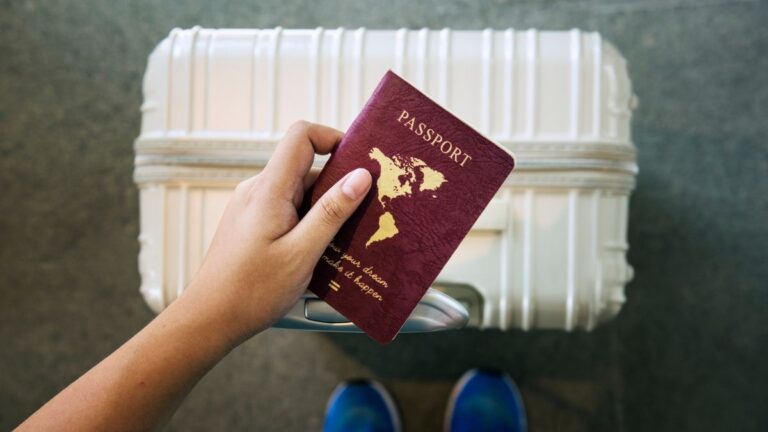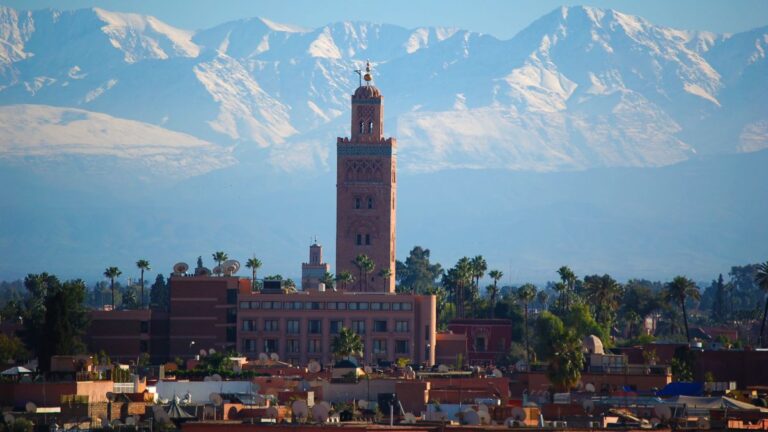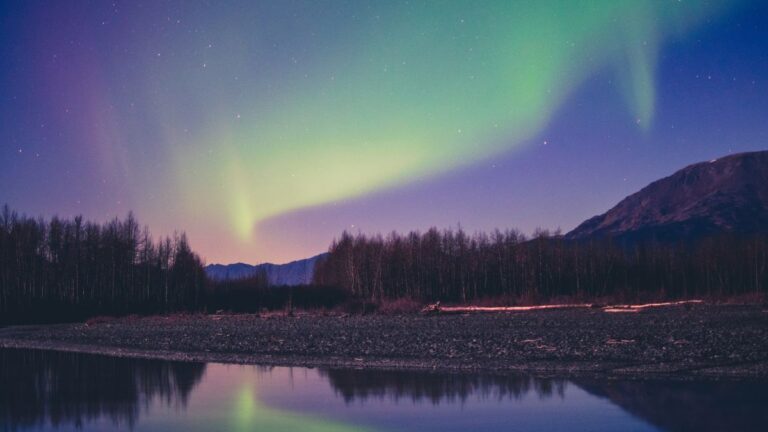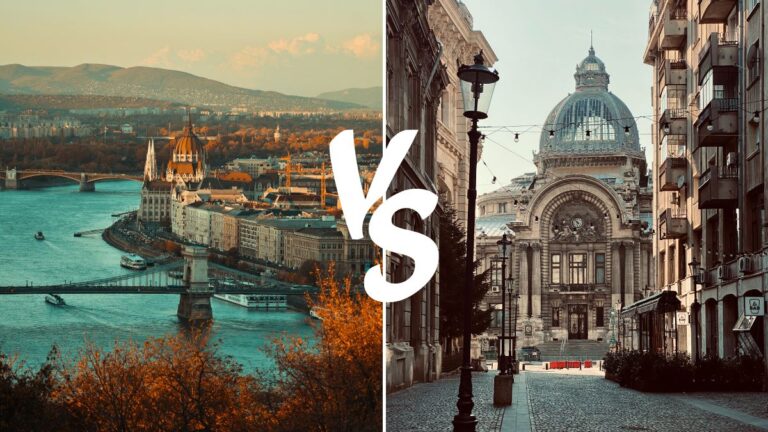Worst Time to Visit Peru: Managing Rainy Seasons and Altitude Sickness
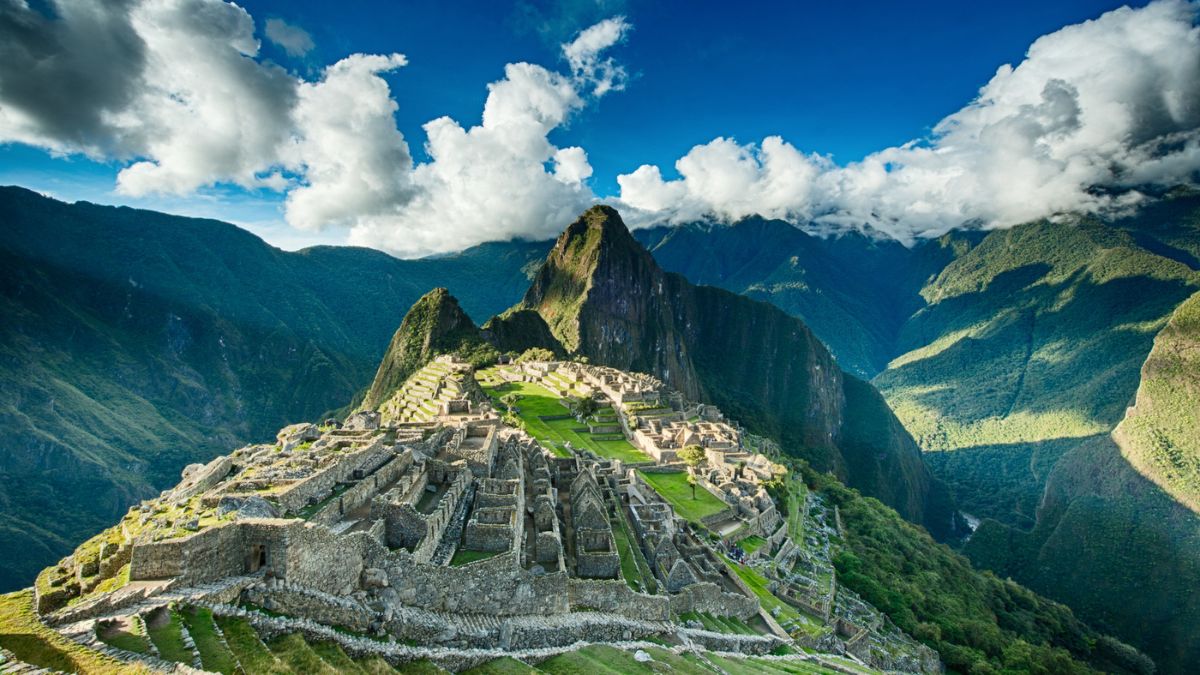
As participants in Amazon Associates and other programs, we earn from qualifying purchases. This comes at no additional cost to you. For more details, see our Affiliate Disclosure.
Peru, with its awe-inspiring Machu Picchu, vibrant cities, and rich history, is a must-visit destination for many adventurers. However, timing your visit is crucial. If you’re unprepared, the rainy seasons can dampen your experience, and the high altitudes might leave you breathless in more ways than one. In this article, we’ll delve into when it might be less than ideal to visit and how to manage these challenges should you find yourself in the midst of them.
HIGHLIGHTS
- The worst time to visit Peru, primarily due to rain and altitude concerns, typically coincides with the rainy season from November to March.
- Traveling during off-peak seasons can offer benefits like fewer crowds, greener landscapes, and better deals.
- Areas such as Lima, Nazca, the northern beaches, and certain parts of the Amazon offer experiences with minimal altitude or rain concerns.
- Health and safety preparations, including vaccinations and altitude sickness precautions, are vital when planning a trip to Peru.
The Peaks and Puddles: Understanding Peru’s Rainy Seasons
Peru is a land of diverse climates and topographies, with the Andes Mountains stretching its length and the vast Amazon rainforest to the east. Such geographical diversity naturally results in varied weather patterns. When planning a trip to this South American gem, it’s essential to understand the rainy seasons, as they can significantly influence your experience.
Rainforest Rains: The Amazon basin, home to the world’s most extensive tropical rainforest, experiences heavy rain throughout the year, with the heaviest downpours typically from November to April. The rainfall feeds the lush vegetation and rivers but can make travel within the region more challenging due to muddy trails and swollen waterways.
Andean Showers: The Andes, on the other hand, have a more marked rainy season from December to March. During these months, places like Cusco, the Sacred Valley, and Machu Picchu can witness frequent and heavy rainfalls. While the terraced landscapes and cloud forests look stunning in the mist, the rains can lead to slippery trails and even occasional road and site closures.
Coastal Climates: Contrary to what one might expect, the Peruvian coast, which includes Lima, sees little rain. Instead, it experiences a garúa, a dense mist, particularly between June and November. This phenomenon is a result of the cold Humboldt Current meeting the warmer air, creating a layer of fog that blankets the coast.
While the rainy seasons in Peru bring their challenges, they also lend the country a unique charm. The vibrant greens of the landscapes and the misty ambiances create picturesque scenes. However, travelers should be well-prepared to tackle potential disruptions and changes to their plans. Being informed and adaptable is key.
High Altitude Destinations: Where and Why It Matters
The soaring Andes Mountains, which traverse the length of Peru, give rise to several destinations that sit at notably high altitudes. These elevations not only provide stunning panoramas and unique ecosystems but also present specific challenges for visitors, particularly those unaccustomed to such heights. Let’s delve into some of the significant high-altitude spots in Peru and explore the importance of acclimatizing.
Cusco: The Historic Capital
Resting at around 3,400 meters (11,150 feet) above sea level, Cusco was once the capital of the vast Inca Empire. The city serves as the main gateway to Machu Picchu and is a significant attraction in its own right, with its cobblestone streets and colonial architecture.
However, its elevation means visitors might feel the effects of altitude shortly upon arrival.
Puno and Lake Titicaca
Puno, perched on the shores of the majestic Lake Titicaca, stands at about 3,800 meters (12,467 feet) above sea level.
The lake itself is the world’s highest navigable body of water and offers unique cultural experiences, including the floating Uros Islands. Yet, the altitude can be challenging for many visitors.
Arequipa and Colca Canyon
Though Arequipa, the White City, is at a relatively lower altitude of 2,335 meters (7,660 feet), the nearby Colca Canyon, one of the world’s deepest canyons, reaches significant elevations.
Trekking and viewing the famed Andean condors here can be breathtaking, both literally and figuratively.
Why Altitude Matters
At high altitudes, the air pressure is lower, which means fewer oxygen molecules are available with each breath you take. This reduction can lead to altitude sickness, or soroche, whose symptoms include headaches, nausea, dizziness, and shortness of breath.
Even those in good physical condition can be affected, making it vital to acclimatize, hydrate, and take things slowly when arriving at elevated destinations.
While Peru’s high-altitude regions are among its most enchanting, understanding the challenges and preparing adequately can ensure a comfortable and memorable journey. Always listen to your body, and when in doubt, seek advice from local experts or medical professionals.
Altitude Sickness: Symptoms and Precautions
Ascending to great heights in regions like the Andes Mountains of Peru can be an exhilarating experience, offering breathtaking vistas and a chance to explore ancient cultural sites. However, the thinner air at higher elevations can pose challenges to our bodies, often leading to a condition known as altitude sickness or acute mountain sickness (AMS). Recognizing the symptoms and taking preventive measures can be the key to enjoying your high-altitude adventures safely.
Symptoms of Altitude Sickness
Altitude sickness typically manifests within hours after ascending to high elevations and can range from mild to severe. Common symptoms include:
- Headache: Often described as throbbing and getting worse during the night and when waking up.
- Nausea and Vomiting: Feeling queasy or being sick is a clear indication that your body is not acclimatizing well.
- Dizziness: A sense of lightheadedness or instability.
- Fatigue and Weakness: An unusual tiredness, even after minimal activity.
- Shortness of Breath: Difficulty breathing, especially with exertion.
- Difficulty Sleeping: Restlessness and insomnia due to the reduced oxygen levels.
- Loss of Appetite
- Swelling of Hands, Feet, and Face
In extreme cases, altitude sickness can progress to High Altitude Pulmonary Edema (HAPE) or High Altitude Cerebral Edema (HACE), both of which are life-threatening and require immediate medical attention.
Precautions and Remedies
- Gradual Ascent: Whenever possible, take your time to ascend to higher altitudes. The body needs time to adapt to the decreasing oxygen levels.
- Stay Hydrated: Drink plenty of water, as dehydration can exacerbate the symptoms.
- Limit Alcohol and Caffeine: Both can dehydrate you and increase the risk of AMS.
- Eat Carbohydrates: Consuming a carb-rich diet can help with acclimatization.
- Medication: Drugs like acetazolamide (Diamox) can be prescribed to help prevent AMS. Always consult with a doctor before your trip.
- Acclimatize in Cusco: If you’re heading to even higher destinations in Peru, spending a few days in Cusco can help your body adjust.
- Recognize Symptoms Early: Pay attention to your body. If you begin to feel unwell, it’s essential to descend to a lower altitude as quickly and safely as possible.
While altitude sickness is a concern for many traveling to elevated destinations in Peru, being informed and taking proactive measures can ensure a safe and enjoyable trip. Remember, altitude sickness does not discriminate, and even the fittest individuals can experience symptoms.
How the Rainy Season Impacts Popular Tourist Attractions
The allure of Peru extends far beyond its ancient ruins, encompassing vast landscapes, dense jungles, and bustling urban centers. Yet, the rainy season, spanning primarily from December to March, can significantly influence the accessibility and enjoyment of some of the country’s most renowned tourist destinations. Let’s dive into how the rains reshape the experience at several popular attractions.
- Machu Picchu:
- Access: Train tracks leading to Aguas Calientes, the gateway to Machu Picchu, can sometimes face temporary closures due to landslides in heavy rains.
- On-site Experience: The ruins draped in mist offer a mystical ambiance, but the pathways can get slippery, making it crucial to wear sturdy shoes. The crowds are thinner, which might be a silver lining for some visitors.
- The Sacred Valley:
- Landscape Changes: The valley turns lush green, with rivers and streams swelling, adding to the picturesque quality of the region.
- Travel Challenges: Some roads might be harder to navigate due to water logging or minor landslides.
- The Amazon Rainforest:
- Wildlife Spotting: Increased rainfall can make some wildlife less visible, but it also leads to the emergence of other species, especially amphibians.
- River Navigation: The rainforest’s waterways swell, altering boat travel dynamics, which can lead to changed itineraries or routes.
- Arequipa and Colca Canyon:
- Trekking: While Arequipa city remains relatively dry, treks in the nearby Colca Canyon can be more challenging due to muddy trails.
- Visibility: The rain can bring with it mist and fog, affecting the clear views of the canyon and the possibility of spotting the famous Andean condors.
- Lima:
- Urban Drizzles: The capital city doesn’t witness heavy rains, but the drizzles and mists, locally called ‘garúa,’ can cast a gray pallor over the city.
- Outdoor Activities: Sightseeing remains largely unaffected, but for those looking forward to beach activities, the weather can be a dampener.
- Nazca Lines:
- Flight Tours: Overflights, the primary means of viewing the mysterious Nazca Lines, might be rescheduled or canceled due to poor visibility or heavy cloud cover.
While the rainy season brings certain challenges, it also offers a different perspective on Peru’s attractions. The landscapes are rejuvenated, waterfalls are in full spate, and there’s a freshness in the air.
However, it’s imperative to be prepared for changes in plans and to approach activities, especially trekking, with caution. Proper research, flexible itineraries, and suitable gear can ensure that even the rain doesn’t dampen your Peruvian adventure.
Packing for Success: Essential Items for Rain and Altitude
Preparing for a trip to Peru, especially during the rainy season and when high-altitude destinations are on the itinerary, requires thoughtful packing. The key is to ensure you’re comfortable, dry, and prepared for the unique challenges presented by both rain and altitude. Here’s a guide to essential items that should find their way into your luggage.
- Waterproof Gear:
- Rain Jacket/Poncho: Opt for a lightweight, breathable, and packable option.
- Umbrella: Compact and sturdy to handle sudden downpours.
- Waterproof Backpack Cover: To protect your belongings during hikes or city tours.
- Waterproof Shoes/Boots: Ideal for treks and city exploration alike. Ensure they have good grip for slippery surfaces.
- Ziplock Bags: Handy for storing electronics and important documents.
- Clothing for Layering:
- Breathable Base Layers: Consider moisture-wicking materials to keep you dry and comfortable.
- Insulating Mid-layers: Fleece or down jackets for warmth, especially in the evenings.
- Warm Hat and Gloves: Particularly crucial for high-altitude destinations.
- Altitude Sickness Prevention:
- Prescribed Medication: Consult your doctor about medications like acetazolamide (Diamox).
- Coca Leaves or Candy: Locally available, they’re often used to alleviate mild altitude sickness symptoms.
- Hydration Salts or Tablets: These can help maintain electrolyte balance and assist in hydration.
- Health and Safety Essentials:
- Personal First-Aid Kit: Including pain relievers, band-aids, antiseptic wipes, and blister patches.
- Water Purification Tablets: Especially if you’re trekking or visiting remote areas.
- High SPF Sunscreen: The sun is stronger at higher altitudes.
- Sunglasses: Polarized lenses will protect against UV rays.
- Insect Repellent: Essential for the Amazon region and other tropical areas.
- Navigation and Information:
- Compact Travel Guide: For local insights and maps.
- Portable Charger: Ensure your devices stay charged, especially during long day trips.
- Compass or GPS Device: Useful for trekkers.
- Comfort Essentials:
- Lip Balm: Alleviate dryness caused by high altitudes.
- Moisturizer: Combat skin dryness in the mountain air.
- Thermal Flask: Keep beverages hot, which can be comforting in cold, rainy weather.
While this list provides a comprehensive guide, always tailor your packing based on the specific activities you’ve planned and the regions of Peru you’ll be visiting. Being adequately prepared allows you to focus on the beauty and adventures Peru has to offer, ensuring a memorable experience.
Health and Safety: Preparing for Your Trip
When preparing for your trip to Peru, health and safety should be at the forefront of your considerations. The diverse landscapes, from towering mountains to dense jungles, each come with their unique challenges.
Before embarking on your journey, it’s wise to schedule a visit to your doctor or a travel clinic. They can provide guidance on necessary vaccinations, such as those for yellow fever or typhoid, especially if you’re venturing into the Amazon region. While there, ensure you’re up-to-date on routine vaccines like measles, mumps, and rubella (MMR).
Altitude sickness is a common concern for travelers visiting high-elevation destinations like Cusco or Puno. Familiarize yourself with the symptoms, and consider asking your doctor about preventive medications. Remember, staying hydrated and ascending slowly can be the key to acclimatization.
Malaria and Zika are potential risks, particularly in the Amazon basin. To minimize the threat, pack and consistently use insect repellent. It’s also wise to bring along a bed net if you’re planning to stay in basic accommodations or lodges.
Stomach upsets can be a common traveler’s grievance. To minimize risks, practice caution when choosing where and what to eat. Drinking only bottled or purified water and avoiding street food or raw foods in uncertain environments can go a long way in preventing gastrointestinal issues.
Lastly, ensure you have comprehensive travel insurance. Accidents, unexpected illnesses, or travel disruptions can happen, and having a safety net can be invaluable. With careful planning and a focus on health and safety, your Peruvian adventure can be both thrilling and carefree.
Embracing the Unexpected: Making the Best of Your Visit
Embracing the unexpected is often the key to transforming an ordinary trip into an unforgettable adventure. When traveling to a country as diverse and multifaceted as Peru, it’s almost inevitable that some surprises will emerge along the way. Instead of viewing these as obstacles, consider them opportunities to dive deeper into the essence of your destination.
Weather can be one of the most unpredictable elements of any journey. A sudden downpour might mean that your trek to Machu Picchu is drenched, but it can also lead to breathtaking vistas of mist-clad mountains, offering photographs and memories that fair weather simply can’t provide. Moreover, unexpected rain can give you the perfect excuse to explore local cafes, engage with residents, or immerse yourself in a museum you might have otherwise skipped.
Transportation hiccups, whether it’s a missed connection or a rescheduled flight, can lead to unscheduled stays in unfamiliar towns. Rather than lamenting the change of plans, use this time to explore the local area, sample regional dishes, or simply rest and recharge.
At times, cultural misunderstandings might occur, leading to amusing or enlightening moments. Instead of feeling embarrassed or frustrated, approach such situations with curiosity. They can become opportunities to learn more about local customs and deepen your appreciation for the cultural nuances that make each place unique.
Of course, it’s always essential to ensure safety during unexpected scenarios. Yet, by adopting a flexible mindset and remaining open to the unplanned, you can uncover hidden gems and enrich your travel experience. After all, the most treasured stories often come from the detours, not the well-trodden paths.
Adapting Itineraries: Avoiding High Altitude and Rainy Areas
Peru, with its rich tapestry of landscapes and climates, allows for flexibility in crafting itineraries. If you’re keen on avoiding the challenges posed by high altitude or the inconveniences of the rainy season, it’s entirely possible to curate a memorable journey that sidesteps these elements.
1. Coastal Charm
Begin on the Pacific coast with Lima, the capital. Dive into its historical heart, indulge in the renowned culinary scene, and perhaps visit the nearby Pachacamac ruins.
Further south lies Paracas, where you can explore the Ballestas Islands, often dubbed the “Galápagos of Peru,” teeming with marine life.
2. The Nazca Mystique
Journey to Nazca, where the enigmatic Nazca Lines can be viewed from observation towers or by taking a flight. The desert landscape here offers a stark contrast to the Andean highlands and the tropical rainforest.
3. Northern Beaches
Consider the north for its sandy stretches. Towns like Máncora offer warm weather, golden beaches, and fantastic surf spots, making it an ideal location to relax and soak up the sun.
4. The Amazon Lowlands
Though the Amazon can be rainy, certain areas, like Iquitos, can be relatively drier than others depending on the month.
Cruises or jungle lodges offer immersive rainforest experiences, from spotting pink dolphins to birdwatching, without the constant rainfall associated with other tropical areas.
5. Trujillo & Chiclayo
These northern cities are not just free from the high altitudes typical of cities like Cusco, but they also offer an impressive array of archaeological sites. Explore the ancient adobe city of Chan Chan in Trujillo or the Lord of Sipán tomb in Chiclayo.
6. Arequipa’s Surroundings
Though Arequipa sits at an elevation, it’s considerably lower than Cusco. The nearby Colca Canyon, twice as deep as the Grand Canyon, can be visited without ascending to challenging heights.
If you’re flexible with your dates, aim for times when the coast is at its sunniest (December to April) and when the Amazon rain is least persistent. This way, you can experience the best of these regions without the inconvenience of rain or altitude concerns.
With a bit of planning, it’s easy to craft an itinerary in Peru that prioritizes comfort without sacrificing unforgettable experiences.
The Silver Lining: Benefits of Visiting During Off-Peak Seasons
Choosing to visit Peru during its off-peak seasons can be a deliberate strategy for travelers looking to experience the country in a unique light. While there might be challenges such as unpredictable weather or altered accessibility to certain sites, the off-peak period, which primarily coincides with the rainy season, brings with it several unexpected advantages:
1. Fewer Crowds: Popular destinations like Machu Picchu, Sacred Valley, or the streets of Cusco see fewer tourists. This means more unobstructed views, less waiting, and a generally more serene experience. It’s an ideal time for those seeking solitude and a more intimate connection with the sites.
2. Greener Landscapes: Rain revitalizes the landscapes, painting them in vibrant shades of green. The terraced fields of the Sacred Valley or the slopes surrounding Machu Picchu become lush, offering picture-perfect scenes and a stark contrast to the drier months.
3. Better Deals: Many hotels, tours, and services may offer discounted rates during the off-peak season. This can translate to significant savings, allowing you to potentially upgrade accommodations or add in experiences that might have been out of budget during peak times.
4. Richer Cultural Interactions: With fewer tourists around, locals are often more relaxed, leading to more authentic and enriched interactions. Whether it’s a deeper conversation with a market vendor in Pisac or a more personalized guided tour, these moments can be the highlights of a trip.
5. Enhanced Wildlife Spotting in the Amazon: The rain causes rivers to swell and certain wildlife, especially amphibians, to become more active. While some creatures might be less visible, others emerge in abundance, reshaping the wildlife-watching experience.
6. Unique Photographic Opportunities: The combination of mist, dramatic clouds, and vibrant landscapes can offer unparalleled photographic moments. The interplay of light and shadow during the rainy season can be a photographer’s dream.
7. Fresher Air and Cooler Climates: The rains often bring with them fresher air and cooler temperatures, especially welcome in areas that can become stiflingly hot.
While it’s essential to be prepared for the challenges of off-peak travel, such as packing suitable rain gear and being flexible with plans, the silver linings are abundant.
Embracing the unpredictability can lead to a richer, more nuanced appreciation of Peru’s diverse offerings.

